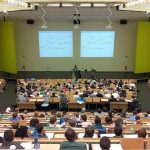Specialists of the HSE Institute of Education have identified differences in regional school education systems that must be considered when implementing a national project.
Differences in the characteristics of the development of school education in Russia between the regions of Russia are not always due to “natural” reasons associated with the differences in the demographic and socio-economic conditions of the regions. In a number of cases the reasons for the differences are related to the management strategies in the regions. In part, the heterogeneity of educational indicators is associated with disproportions in the spatial development of Russia and the difference in the socio-economic conditions of the regions. Territorial imbalances between the regions were evident in the share of school buildings requiring capital repairs. The average for Russia is not more than 13%, but in several regions of such school buildings more than a third. Among these regions there are those in which the share of spending on education is quite high. On the contrary, in a fairly large group of subjects of the Russian Federation with low economic indicators, there are either no such buildings at all or very few of them. Experts pay attention to the continuing large-scale differences in the speed of connecting schools to the Internet in urban and rural areas and between regions. Among the parameters that, according to the experts of the HSE Institute of Education, can not be attributed to the economic differences in the regions, were the regions’ indicators by the number of winners of the All-Russian schoolchild competition for 100,000 people, the development of training according to individual plans, regional deficiencies of tutors and psychologists.
Experts have to understand what regional factors have an impact in each case. Meanwhile, the authors of the study believe that the nature of the observed differences, as well as their causes, should be taken into account when designing a national project in the field of education. Otherwise, both risks arise for the fulfillment of the set goals, and the likelihood of intensifying inter-regional differentiation.
News
- Happy New Year! 25.12.2023
- Quasi-adaptive version of SAM tests 21.12.2023
- Using SAM to Measure Computer Literacy 19.12.2023
- Working meeting of representatives of CICED with representatives of the National Center for Assessment of the Quality of Education (NCQA) under the President of the Republic of Tajikistan” 15.12.2023
- Working meeting of representatives of CICED with representatives of the National Institute of Education of the Ministry of Education and Science of the Republic of Belarus 12.12.2023
- Working meeting of representatives of the Center for International Cooperation for the Development of Education with the Deputy Minister of Education and Science of the Kyrgyz Republic and representatives of the National Center for Assessment of the Quality of Education and Information Technologies under the Ministry of Education and Science of the Kyrgyz Republic (NTSOKOIT) 07.12.2023
- Working meeting of representatives of the Center for International Cooperation for the Development of Education with representatives of the Center for Assessment and Testing (ACT RA) under the Ministry of Education, Science, Culture and Sports of the Republic of Armenia 05.12.2023
- International cooperation of CICED in 2023 27.11.2023
- Progress on girls’ access to education: What the new UNESCO data reveals 23.10.2023
- 44 million new teachers must be recruited by 2030 to achieve our education goals 29.09.2023






